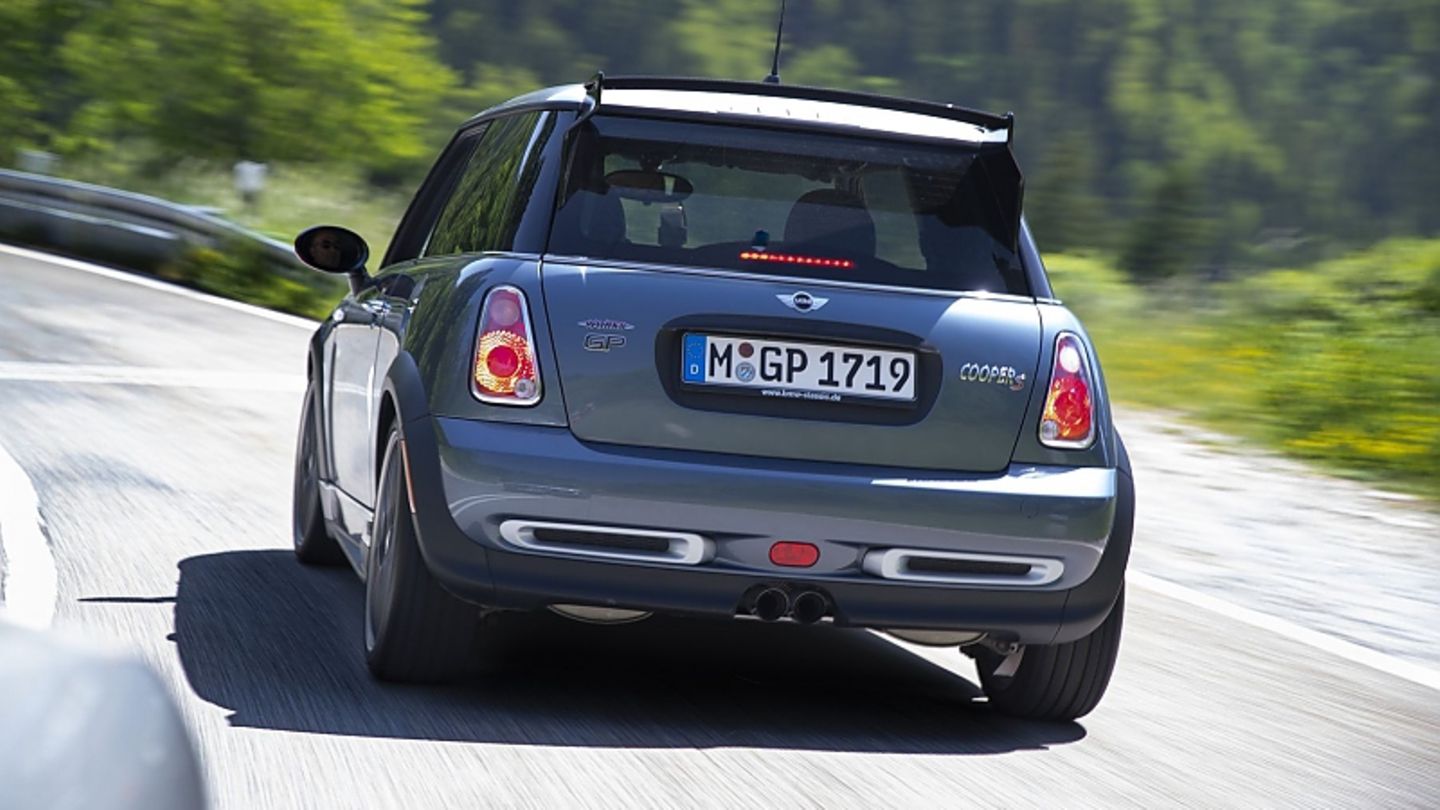The John Cooper Works models are rightly considered the crowning glory of every Mini Cooper series. But no variant has ever achieved the ruthless purism of the first edition of the JCW GP Kit. And even today, 15 years after its baptism, this Mini is an experience.
Almost no text about a Mini Cooper can do without the term “go-kart feeling”. We really tried it this time, but should have known that we picked exactly the wrong model in order to reduce this marketing drum to a minimum. Because the data sheet of the Mini Cooper S (R53) with JCW GP Kit is pretty clear: 1,100 kilograms, power 154 kW / 218 PS. In addition, a wheelbase of 2.47 meters – which translates to: nimble.
Especially since the usual procedure “from the road to the racetrack” was reversed with this racer. Because the basis for this Mini Cooper was the speedster from the Mini Challenge. So the GP Kit has earned its name. So the Mini Cooper S with JCW GP Kit has a limited slip differential, but no ESP (which was available on request) and no air conditioning, which could also be ordered.
In addition, there is a motor that, thanks to compressor forced ventilation, bludgeons 154 kW / 218 PS and a maximum torque of 250 Newton meters on the front axle and thus has more power than the Mini Challenge bolide. So that the weight can be reduced to the 1,100 kilograms, the technicians threw everything out of the car that is not absolutely needed. In addition to the air conditioning, the rear seat has also been blown out and replaced by a powerful cross strut that reduces the torsional stiffness of the body. In addition, there are Recaro sports seats and the lack of air conditioning, together with other little things, results in a weight reduction of one hundredweight.
Throwing out equipment (by the way, the rear window wiper is also missing) and using lightweight materials is not enough. In order for the two-seater to remain manageable even when wagging, changes to the body had to be made. As the word “kit” already indicates, the developers have optimized the aerodynamics with extensive wind tunnel tests. In addition to the clearly visible large rear wing, the modified front apron with large air openings also catches the eye. 16-inch brake discs peek out from behind the alloy rims, ensuring stable deceleration. The ultimate distinguishing feature that you are dealing with the most powerful series mini at the time is the two-tone paintwork in “Thunder Blue” with a silver roof (“Pure Silver”).
The Mini was built by Bertone’s Italian body specialists. The Italians had previously had a connection with the British automaker, as they had designed the body for the Innocenti Mini. A small car that was produced by the Milanese manufacturer of the same name from 1975 and was technically based on the British Leyland Mini.
Only 2,000 of the new Bertone Mini were made. We’re allowed to drive one of them. So get into the car and find out (in the truest sense of the word) whether the printed digits and data translate into agility or the whole thing is just ink and paper. The technicians didn’t have to save a lot of weight on the cockpit: The hard plastic sins of the first BMW Mini generation, including the Playmobil lever with a yellow tip, are cult today. We notice that sports seats are sometimes a little higher than the standard seats in the headroom, but the bottom line is that everything is OK and the lateral support is all the better.
Here we go. At 28 degrees Celsius, lowered side windows replace the air conditioning. But soon such first world sensibilities take a back seat. Because you’re busy with the car and the road. When it comes to that go-kart feeling, there it is. This Mini is brutally agile and shows in corners how fast a front-wheel drive vehicle can be, namely so fast that we could even keep up with a BMW M3 from the E46 series. However, the joy of cornering is “paid for” with a firm chassis and the steering is so brutally direct that you only have to think of a change of direction and the car is already pulling in that direction. Every bump in the ground and every ridge hits the driver or the wrists.
100 km / h are reached in 6.5 seconds, and the Mini Cooper S can still keep up with the John Cooper Works GP Kit at a top speed of 240 km / h. The highlight is the engine, which needs speed to move forward despite the compressor. There is no need to look at the tachometer. As with a thoroughbred sports car, gear changes are always made by ear. The background noise is reminiscent of an X-Wing hunter with whom Star Wars hero Luke Skywalker was out in the Galaxy to fight against evil. If the compressor buzzes at high frequencies, you pull into the next higher gear of the crisp six-speed manual transmission. Splendid. Back then, if you were lucky enough to get hold of a copy, the fun cost 30,900 euros. However, the 2,000 pieces were quickly sold out.
I am Pierce Boyd, a driven and ambitious professional working in the news industry. I have been writing for 24 Hours Worlds for over five years, specializing in sports section coverage. During my tenure at the publication, I have built an impressive portfolio of articles that has earned me a reputation as an experienced journalist and content creator.




